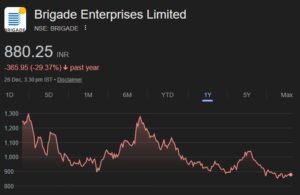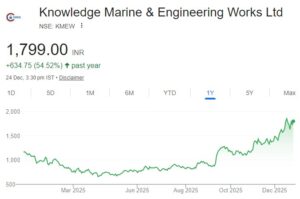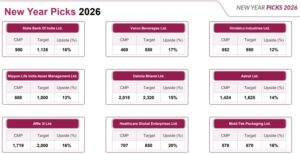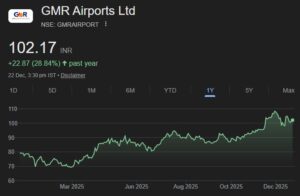![]()
IndusInd Bank got into serious trouble in the past due to significant ALM mismatch, inadequate product basket, high NPAs and inefficient operating structure. The result of this mismanagement of IndusInd Bank was that its net margins were lower than 2% leading to low profitability.
In February 2008, Ramesh Sobti and Abraham Paul of ABN Amro Bank were roped in to turn this around for the beleaguered bank. The new management of IndusInd Bank was given the directive improve productivity, efficiency and thus profitability measured in terms of target RoA, RoE, NIMs, NNPAs and overall efficiency over a period of 2‐3 years.
Hearteningly, the new management of IndusInd Bank has delivered the goods. The figures show that Ramesh Sobti and Abraham Paul have managed to re‐define the business processes, products, culture, compensation structure and risk architecture and converted IndusInd Bank into a goal oriented growth focused bank.
| IndusInd Bank Financials (Rs.in crs) | ||
| Mkt. Cap | 7367.66 | |
| P/E * | 21.04 | |
| Div | 0.00 | |
| EPS (TTM) * | 8.53 | |
| Book Value | 44.66 | |
| Debt Equity Ratio | 15.48 | |
| Return On Networth | 10.39 | |
| Current Ratio | 0.61 | |
| Quick Ratio | 9.16 | |
|
* Calculated on adjusted profit after extra-ordinary items |
||
The following factors are likely to lead to a growth in business of IndusInd Bank coupled with premium valuations:
Fee Income is IndusInd Bank‘s Focus Area
Thanks to the significant improvement in the margins, IndusInd Bank is now focusing on fee income (targeting 30‐35%YoY growth) to enhance its RoA and RoE. IndusInd Bank‘s core fee income contribution has been lower prior to FY09
(about 1% of average assets) due to inadequate product suite, weak customer base and profile.
The new management of IndusInd Bank has made it clear that it wants to improve the fee income of IndusInd Bank such as improved pricing of existing services, enriching fee based product basket, enlarging customer base and stepping‐up fee based services such as transactional banking, third party distribution, trade & foreign exchange, cross‐selling and loan processing apart from conventional sources of fee income. To achieve this goal IndusInd Bank has set up special product groups broadly categorized as –
IndusInd Bank‘s Transactional banking group – to cater to various transactional banking requirements such as CMS, trade finance, supply chain financing, remittances, commodity financing, electronic banking and capital market related financial services.
IndusInd Bank‘s Global markets group – sale of international business products including derivatives, bullion import, corporate forex and proprietary trading in fixed income/currencies/equity markets
IndusInd Bank’s Research Report
[download id=”63, 64, 65, 66″]
IndusInd Bank‘s Investment banking group – Investment banking mandate for clients. IndusInd Bank has revamped the team to increase business from this lucrative business segment. IndusInd Bank is expecting about Rs250mn fee income from this business.
IndusInd Bank already has a strong presence in consumer finance segment; however, off‐late share of corporate loans too has increased in bank’s loan portfolio, indicating increased activity on corporate side, which should further boost banks fee income. Being a small bank, SME remains the key focus segment for the bank to generate fee income, where it can offer its high end technology products and create a niche for itself.
During past few quarters,IndusInd Bank has witnessed strong expansion in non‐interest income driven by better fee income and treasury gains. Going forward, strong>IndusInd Bank’s share of non‐interest income is expected to marginally reduce led by subdued treasury income; however, fee income (including forex income) contribution to RoA is likely to go up to 0.9% from 0.5% in FY07.
Apart from the above, IndusInd Bank has a well diversified loan book. About 59% of IndusInd Bank‘s loan book represents corporate loans while 41% represents retail (consumer finance) loans. IndusInd Bank‘s Loans are expected to grow at 30% CAGR over FY09‐12E. The loan growth during past 4 quarters has grown by about 20%. IndusInd Bank intends to broad‐base its corporate customer profile and focus on high yielding SME loans where high end technology products & services can be provided at better pricing.
IndusInd Bank also plans to expand its branches. IndusInd Bank has added about 30 branches in FY10 and plans to add about 100 branches in next one year. IndusInd Bank already has strong distribution network of about 468 touch points, of which some can be converted in to branches with minimal expense. IndusInd Bank has also introduced some new products at its branches to accelerate the CASA drive and is focusing on proprietary and small businesses for shoring up its CASA deposit base.
It is expected that IndusInd Bank‘s next wave of growth will be strong and well supported by significant branch expansion. IndusInd Bank has set ambitious growth targets over next 2 years, with continued focus on productivity, efficiency and thus profitability.
IndusInd Bank‘s stock is already commanding premium valuations as a result of the overall improvement in fundamentals and its transformation to a growth bank. Given that the future looks bright, any investor with a long-term horizon must have IndusInd Bank in his / her portfolio.






